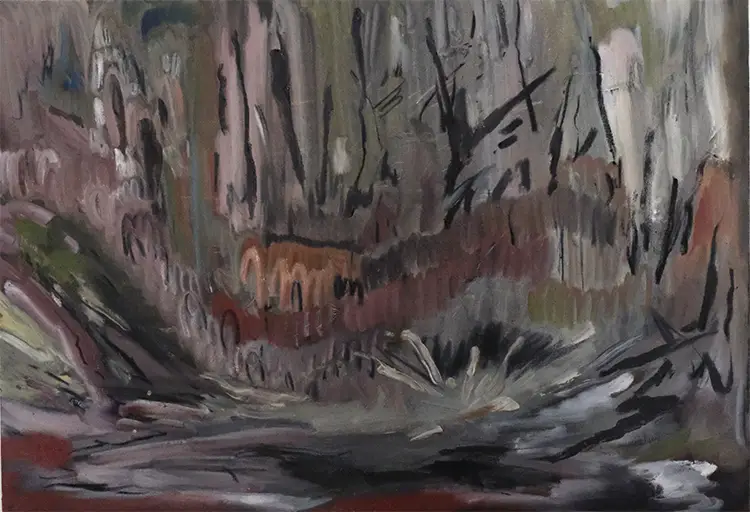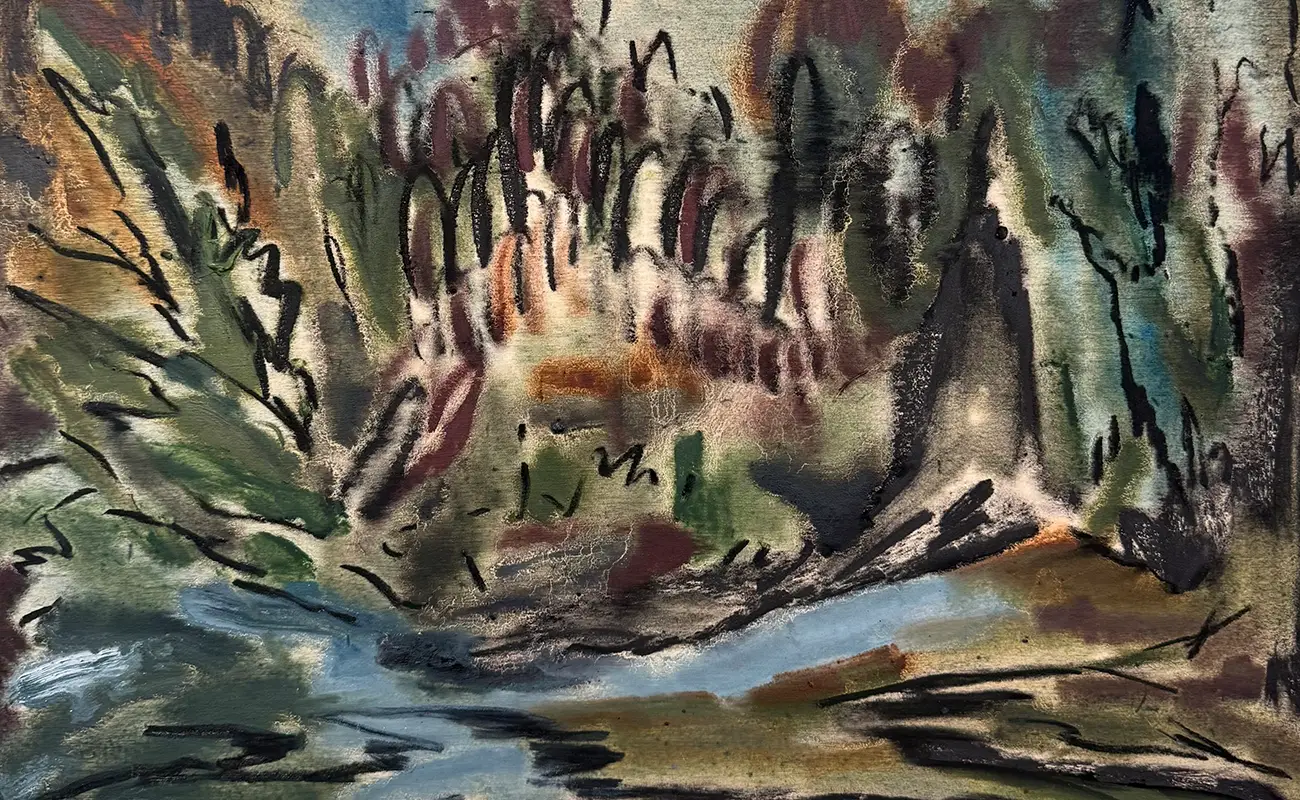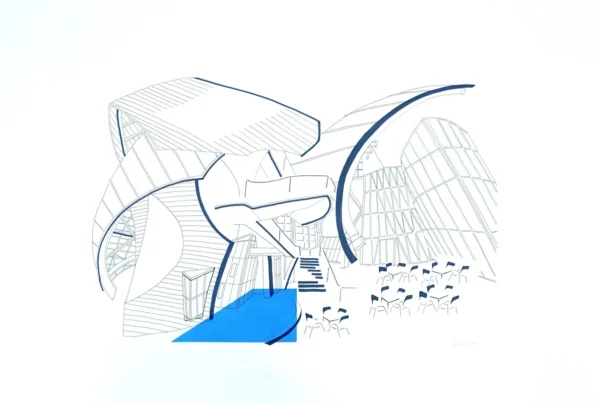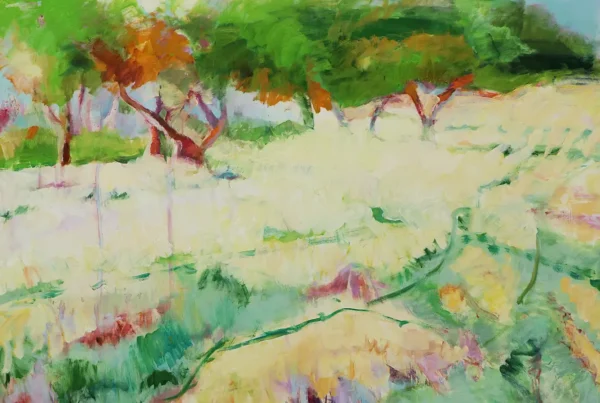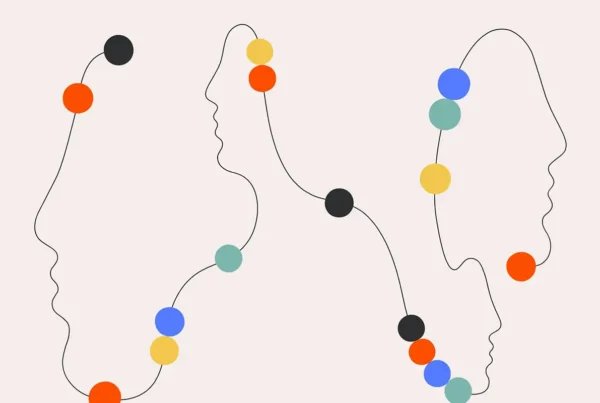“Art is not just a way of expression or a tool, but the very essence of my life.”
Echoes of the Body: Art as a Witness to Survival
Born in 2001 in Tainan, Taiwan, Kuan-Yu Chou positions her work at the convergence of personal vulnerability and conceptual rigor. Now based in London and pursuing an MA in Art and Science at Central Saint Martins, University of the Arts London, her practice spans painting, performance, and video. These disciplines are not merely formal choices but deeply responsive frameworks through which she investigates the unstable terrain of memory, illness, and identity. Rather than offering representational narratives, her work functions as a subjective system of meaning-making—a visual vocabulary forged through repeated confrontation with physical and emotional thresholds. In this space, fragility becomes form, and resilience is etched into surface and gesture.
At the core of Kuan-Yu’s practice lies a refusal to simplify or resolve emotional complexity. Her central question—how to make the unspoken perceptible—drives a body of work that privileges ambiguity over clarity. The pieces neither illustrate nor explain; they evoke. Drawing on embodied memory, her installations blur the line between the personal and the collective, inviting the viewer not just to look, but to feel with and through the work. The experience is not passive; it is relational. The body—hers and the viewer’s—becomes a site of exchange, where dream, trauma, and transformation intersect. In this way, her work does not only represent vulnerability; it enacts it, generating an affective space where language fails but sensation lingers.
This dimension has taken on deeper resonance in her recent work following the death of a close friend to cancer—a loss that reverberates not only as mourning but as philosophical inquiry. The fragility of life, previously a personal theme, now expands outward into a broader meditation on mortality, impermanence, and the ethics of care. Her practice, already concerned with the emotional residue of illness, now engages with grief as a generative, if painful, force. Her gestures, whether on canvas or in motion, do not seek resolution or healing in the conventional sense. Instead, they linger in the unfinished, in the liminal zones of pain and remembrance—spaces where emotional intensity resists closure and insists on presence.

Kuan-Yu Chou: Art as a Living Pulse
For Kuan-Yu Chou, art is not an externalized profession but an existential necessity—a mode of being through which she navigates the incoherence of chronic illness and emotional rupture. Her entry into art did not emerge from academic ambition or aesthetic interest alone, but from a more visceral urgency: the need to survive. Recurrent illness throughout her life has not only altered her relationship to the body but has also profoundly shaped her worldview, infusing her work with a persistent sense of contingency. In this context, art becomes not only an expressive act but an epistemological one—a way of knowing and inhabiting the world when conventional systems of meaning break down.
Her practice is thus rooted in a paradox: the body as both compromised and indispensable. The act of creation is inseparable from her lived condition—it is how she reconciles the simultaneous presence of limitation and potential. The studio becomes not a site of production, but a site of negotiation, where states of pain, doubt, and clarity cycle through each other in unpredictable rhythms. By embracing this instability, Kuan-Yu transforms the creative process into an act of radical presence. In this gesture, she affirms the value of process over outcome, of questioning over certainty. What emerges are works that pulse with an inner logic—one shaped by endurance, intimacy, and the slow unfolding of personal truth.
Yet her art is not hermetically sealed in autobiography. What begins in the self becomes a shared encounter. Her works are less statements than open-ended propositions—asking the viewer to enter into the conditions of unknowing she herself inhabits. This mutual vulnerability builds an empathetic bridge, where personal grief echoes as collective recognition. In this space, Kuan-Yu challenges the notion of art as product, insisting instead on art as encounter—a meeting point for fractured bodies and unfinished thoughts, where connection is made not through clarity, but through resonance.

The Invisible Language of Emotion
The emotional density of Kuan-Yu’s work stems from her refusal to treat emotion as aesthetic content. Instead, it is the material itself—an invisible force that structures form, rhythm, and intention. Illness is not simply a theme in her work, but an epistemic condition: it reorganizes time, perception, and embodiment. Through her practice, she interrogates how these altered states shape not only the body but also visual language. A brushstroke, a shift in palette, or a pause in performance becomes an articulation of internal dissonance—a translation of what cannot be said, only enacted.
Grief, recovery, and rupture are not dramatic events in her work; they are atmospheric conditions. Influenced by her lived encounters with loss—such as the recent death of a friend—her visual strategies suggest not catharsis but immersion. She does not depict grief; she constructs its texture. These textures do not smooth over emotion but hold its contradictions. In doing so, her work offers viewers a mirror for their own ambiguous states—those moments where emotion overwhelms language, where silence speaks louder than articulation. Here, meaning does not arrive through interpretation but through affective recognition.
Working fluidly across painting, photography, and performance, Kuan-Yu allows each medium to stretch emotion in a different direction. A canvas might hold a residue of stillness, while a gesture in performance could channel tension or rupture. The choice of medium is never arbitrary; it emerges from the emotional logic of the moment. This insistence on affective fidelity—rather than formal coherence—gives her practice a unique integrity. It is not about resolution or beauty but about staying with emotion long enough for it to become something else. In this way, she cultivates a slow and immersive aesthetic, where ambiguity is not an absence of meaning but its deepest expression.

Kuan-Yu Chou: The Body as Instrument, Archive, and Witness
For Kuan-Yu Chou, the body is not merely represented in her work—it is the generative engine of her practice. She treats her body as both sensor and site, where emotion and material coalesce. This embodied approach reframes the body not as a vessel for meaning, but as meaning itself—a dynamic archive of sensation, memory, and transformation. In her performances and paintings, the marks, textures, and gestures are not illustrative; they are imprints of a lived encounter. What we see is not a representation of feeling, but feeling made visible through the body’s labor.
Her emotional states do not exist outside the act of making—they are constitutive of it. Anger, fatigue, serenity, or grief are not edited out; they become structuring forces, directing the rhythm and resistance of the work. This emotional agency is critical to understanding her practice. Rather than impose intellectual coherence, she trusts in the body’s intuitive knowledge—allowing it to lead, contradict, and reveal. This results in work that feels alive with contradiction—simultaneously controlled and chaotic, deliberate and improvisational. Such tension becomes the space in which affect and form collide.
In inviting the viewer into this embodied process, Kuan-Yu moves beyond the traditional visual encounter. Her work asks us not only to see but to feel with—to recognize that the body, in its fragility and persistence, is a site of both suffering and creation. This is not simply about identification; it is about witnessing. Her practice invites a sensory ethics—one that values presence over detachment, resonance over resolution. In a world that often disavows pain and complexity, Kuan-Yu Chou’s art insists on the depth of the unspoken, the visibility of the invisible, and the radical possibility of feeling as form.
